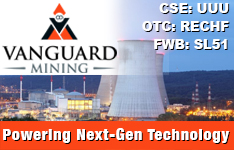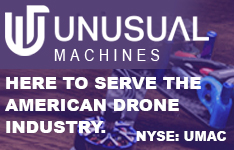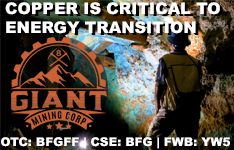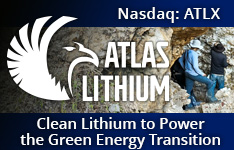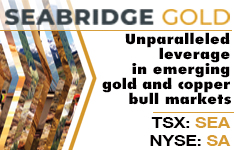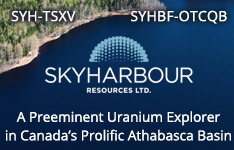Views are mixed on whether an artificial intelligence (AI) bubble has formed in the market. The believers point to untenable valuations and AI capex, limited returns on investments in AI, and other indicators as proof that a bubble exists. Those in the opposite camp say what is happening in AI is a boom, supported by actual revenues, strong earnings, high profits, and rapid technology adoption.
If AI stocks are in a bubble, then there's the threat of it bursting eventually. Were that to happen, the effects could be deleterious and widespread.
"A sharp contraction in tech would put tens of thousands of people out of work, vaporize trillions of investment dollars, torpedo retirement and education funds, obliterate life savings, and ruin lives," Jeffrey Sonnenfeld, Yale School of Management leadership expert, and Stephen Henriques, senior research fellow, wrote on October 8. "It would be a violent shock to a system that's already under strain."
Signs of an AI Bubble
An increasing number of investors are warning that current AI valuations are unsustainable and a stock market correction is imminent, Jon Gingerich, editor of O'Dwyer's magazine, wrote on November 6.
The latest seemingly is Michael Burry, a hedge fund manager who predicted the 2008 U.S. housing market crash, Reuters' Stephen Culp reported on November 4. This story was the basis of the movie The Big Short, in which Christian Bale portrayed Burry.
"Sometimes, we see bubbles," Burry posted on X on October 31 after two years of no social media activity. "Sometimes, there is something to do about it. Sometimes, the only winning move is not to play." Just last quarter, his firm Scion Asset Management LLC bet against two AI behemoths, AI chipmaker Nvidia Corp. (NVDA:NASDAQ) and software company Palantir Technologies Inc. (PLTR:NASDAQ), with put options against 1 million and 5 million of their shares, respectively, Trustnet reported.
Skyrocketing Valuations: The AI bubble believers point to AI companies' sky-high valuations and extreme price/earnings (P/E) ratios. Take Nvidia, for example, whose market cap reached US$5 trillion last month, more than the gross domestic products of Germany, India, or Japan, Gingerich pointed out. The only company ever with such a high valuation, Nvidia, is up 44% year to date (YTD). Software company Palantir, up about 145% YTD, has about a US$446 billion (US$446B) market cap and a P/E ratio over 400. Chipmaker Advanced Micro Devices Inc. (AMD:NASDAQ) is up 107% YTD, has a market cap of US$390B, and a P/E ratio of over 119.
"Technology multiples are full," the exception in the overall market, Goldman Sachs Chief Executive Officer David Solomon said earlier this week at the Financial Leaders' Investment Summit, Culp reported on November 4.
Massive AI Capex: The amount of money being thrown at AI is enormous and unsustainable, and investors are questioning this, too, Business Insider wrote in a November 5 article. Meta Platforms Inc. (META:NASDAQ), Amazon.com Inc. (AMZN:NASDAQ), Microsoft Corp. (MSFT:NASDAQ) Alphabet Inc. Class A (GOOGL:NASDAQ), and Apple Inc. (AAPL:NASDAQ) are all on track to spend around US$349B on AI capex this year alone. Last week, Meta raised its 2025 AI capex guidance to US$70–72B from US$66–72B and disclosed that its 2026 AI capex likely will exceed US$72B. After these announcements, the company's shares dropped as much as 14%.
Dismal ROI: Most of the investment in AI has gone to a small group of tech firms, including Nvidia and OpenAI, yet the return on the same has been greatly disproportionate so far, as reported by The Guardian on November 5.
Forbes noted that "95% of enterprise AI initiatives deliver zero measurable return," according to the August report by the Massachusetts Institute of Technology's Media Lab, "The GenAI Divide; State of AI in Business 2025." OpenAI's ChatGPT generated US$4.3B in revenue in H1/25 but posted a net loss of US$13.5B, according to Bloomberg in a November 6 article.
"The hype simply isn't matching reality; the stock price is superseding whatever underlying value those products actually have," Gingerich wrote. "And this kind of speculation over value is an archetype example of what makes an economic bubble."
Weakening Sentiment: On Tuesday, tech stocks fell sharply "as concerns over lofty tech valuations have hit investor sentiment," said Jim Reid, analyst at Deutsche Bank, according to The Guardian. The tech-focused NASDAQ fell 2%, Culp reported. The S&P 500, which had climbed to a series of all-time highs largely powered by the AI surge, closed lower by just over 1%. Of the index's 11 major sectors, tech was down the most, by 2.3%. Palantir, comprising almost 10% of the index, lost nearly 8% despite having raised its Q4/25 revenue forecast the day before. All of the Magnificent 7 stocks, including Nvidia, retreated about 3.8%.
"All of a sudden, we are starting to see some tech heavyweights fail to live up to investor expectations," David Rosenberg, president of Rosenberg Research, wrote in a client note, Business Insider reported. "Even a company like Palantir has seen its share price hammered even though its results did top expectations — nosebleed valuations got in the way."
Fifty-four percent of institutional investors think AI stocks are in a bubble, according to the October 2025 edition of Bank of America's Global Fund Manager Survey, as reported by Trustnet in a November 5 article. Also, last month, the Bank of England's Financial Policy Committee warned that "equity market valuations appear stretched, particularly for technology companies focused on artificial intelligence."
"The concerns are valid," Emma Wall, chief investment strategist at Hargreaves Lansdown, told Trustnet. "While a number of AI firms have benefitted from strong revenue and profit growth, this has been a narrow and extreme rally."
Complex Financings: Some tech giants are using debt financing (issuing large amounts of debt), or vendor financing (funding their customers' purchases and thereby creating a circular flow of capital), to fund AI projects. These complex financing models can make demand and financial health seem greater than they truly are, Daniel Casali, chief investment strategist at Evelyn Partners, told Trustnet. For example, Nvidia invested US$100B in OpenAI, and OpenAI committed to buying Nvidia's high-end chips. Advanced Micro has made similar deals.
"The AI boom is being supported by vendor-financed deals," Casali added.
Disparity With Economy: The performance of AI and major tech company stocks does not reflect what is happening in the economy, Hawkinvest, a long-time stock market investor, wrote in a November 5 Seeking Alpha article. October saw the highest number of layoffs in a month in 22 years, reported FOX Business on November 6. A total of 153,074 jobs were cut, 33,281 of them in the tech sector. For context, in the same month, 2,431 retail jobs were cut. YTD, 141,159 tech jobs were lost; however, fewer than 200 were among pure-play AI or AI-focused companies. The Conference Board's Leading Economic Index for the U.S. fell 2.8% between February and August, the last month for which data were reported. This suggests economic activity will continue to slow.
The Flip Side: No AI Bubble
U.S. Federal Reserve Chairman Jerome Powell and others have expressed their opinion that AI is not in a bubble. Powell told reporters after the Fed's policy meeting on October 26 that the money being spent on AI is not speculative but rather investments in profit-making firms and actual economic activity, Fortune reported on October 29.
Charlie Parker, managing director of Albermarle Street Partners, said in a recent Wisdom Shared podcast that while the surge in AI stocks looks like a bubble, in reality, it represents a "sustainable shift," based on higher profits and earnings growth.
Dom Rizzo, portfolio manager of T. Rowe Price's Global Technology Equity strategy, recently asserted that "real fundamentals" are driving the AI rally, not hype, Trustnet reported.
"This is not a bubble," Rizzo said. "It is a broad-based buildout with room for multiple winners. The AI opportunity is large, the fundamentals are strong, and the sector still has plenty of runway."
Magnus Grimeland, founder of Singapore-based venture capital firm Antler, told CNBC's "Beyond the Valley" podcast that there is not an AI bubble, the financial news source reported on November 4.
"What makes this a little bit different from a bubble and makes it very different from dotcom is that there's really real revenues behind a lot of this growth," Grimeland said. Also, businesses and consumers are rapidly turning to AI, and executives are willing to invest in the technology today.
Here are two major AI stocks that stand to either suffer the consequences of a popping sector bubble or thrive in the absence of a bubble:
Nvidia Corp.
Based in Santa Clara, California, Nvidia Corp. (NVDA:NASDAQ) is a technology company specializing in AI and accelerated computing.
Last week, the company announced it is working with South Korea to expand the country's AI infrastructure, specifically by supplying 50,000 of its latest graphics processing units to be deployed in the National AI Computing Center and in the clouds of several South Korean cloud and IT service providers. Also, Nvidia is working with the country's industry, academia, and research on AI-RAN and 6G infrastructure.
In a November 2 article by The Motley Fool, contributor George Budwell wrote that, "Yes, Nvidia stock is a buy for long-term investors willing to stomach volatility." He highlighted key risks, commenting, "China restrictions, customer concentration, and questions about AI return on investment could derail the thesis. But Nvidia's exposure extends beyond today's AI boom into quantum computing, robotics, autonomous vehicles, and industrial automation. These markets could add entirely new growth legs as AI training demand matures."
The same day, Scott Searle, the managing director and senior research analyst at ROTH, touched on Nvidia in a short report, saying, "We believe that power and ecosystem will define many of the new winners . . . scale and ecosystem will inevitably translate to Nvidia being a winner." This was an update from a full research note from Roth on September 18, where managing director and senior research analyst Suji Desilva gave Nvidia a Neutral rating and 12-month target price of US$30.
According to LSEG, Lee Frank, analyst with HSBC Global Investment Research, has a Buy rating on Nvidia and a target price suggesting a 69% uplift from its November 6 closing price.
Itau BBA Analyst Stephano Gabrial rates Nvidia Market Perform, and his target implies a 15% return.
1As for the company's ownership breakdown and capital structure, 4.3% is held by 37 strategic entities, another 68.89% is held by 6,085 institutional investors, and the rest is in retail holdings.
Nvidia's Top 3 shareholders are The Vanguard Group Inc. with 9.14%, BlackRock Institutional Trust Co. N.A. with 4.95% and State Street Investment Management (U.S.) with 4.03%.
Nvidia has 24.3 billion (24.3B) shares outstanding, a market cap of US$4.6B, and a 52-week range of US$86.62–212.19 per share.
Palantir Technologies Inc.
Headquartered in Denver, Colorado, Palantir Technologies Inc. (PLTR:NASDAQ) provides AI systems and enterprise operating systems.
 Streetwise Ownership Overview*
Streetwise Ownership Overview*
Palantir Technologies Inc. (PLTR:NASDAQ)
In recent news, Palantir and Valoriza, one of Spain's environmental services companies, have partnered such that Valoriza will use Palantir's Foundry platform to optimize its waste management and urban services operations.
The collaboration will accelerate Valoriza's digital transformation.
According to LSEG, Clark Jeffries, analyst at Piper Sandler, rates Palantir Overweight. His target price indicates 29% upside for PLTR's November 6 closing price.
Loop Capital Analyst Mark Schappel has a Buy rating on the AI firm and a target implying a possible 31% return.
1In terms of Palantir's ownership and share structure, 18 strategic entities hold 3.61%, and 3,367 institutions own 57.16%. The rest is with retail investors.
The Top 3 shareholders overall are The Vanguard Group Inc. with 9%, BlackRock Institutional Trust Co. N.A. with 5.2% and State Street Investment Management (U.S.) with 4.15%.
Palantir has 2.4B shares outstanding. Its market cap is US$415B. Its 52-week range is US$51.61–207.52 per share.
Important Disclosures:
- Doresa Banning wrote this article for Streetwise Reports LLC and provides services to Streetwise Reports as an independent contractor/employee.
- This article does not constitute investment advice and is not a solicitation for any investment. Streetwise Reports does not render general or specific investment advice and the information on Streetwise Reports should not be considered a recommendation to buy or sell any security. Each reader is encouraged to consult with his or her personal financial adviser and perform their own comprehensive investment research. By opening this page, each reader accepts and agrees to Streetwise Reports' terms of use and full legal disclaimer. Streetwise Reports does not endorse or recommend the business, products, services or securities of any company.
For additional disclosures, please click here.
1. Ownership and Share Structure Information
The information listed above was updated on the date this article was published and was compiled from information from the company and various other data providers.













